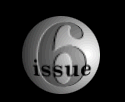



| ||
movie review by Gary Johnson [click on photos Studio Movie Web site: |
At one time, Brian De Palma was one of Hollywood's most talked about directors. Movies such as Dressed to Kill, Body Double, and Scarface found both critical and popular acclaim. But then after box-office duds such as The Bonfire of the Vanities, he fell from favor. The trailers for his last movie, Mission: Impossible, didn't even mention it was directed by Brian De Palma. But thanks to the box-office success of Mission: Impossible, De Palma is back, with a stylish crime drama called Snake Eyes, starring Nicolas Cage and Gary Sinise.
In part, the movie is an exercise in style, with long tracking shots following Cage (who plays a police detective of dubious morals) as he struts through an arena before a boxing match. Some of De Palma's previous films have carried strong echoes of Alfred Hitchcock: Body Double resembled a cross between Rear Window and Vertigo and Dressed to Kill carried a strong Psycho influence. Snake Eyes carries only an incidental similarity to a Hitchcock movie--but the similarity is an important one: the long camera takes are reminiscent of Hitchcock's Rope. However, while Rope was confined to an apartment for its entire running time, Snake Eyes is confined to a huge Atlantic City casino/hotel/boxing arena.
With huge open spaces at his disposal, De Palma indulges in some magnificent tracking shots, with the camera swooping down escalators, down the arena stairs, through the crowd, and up to Cage's ringside seat. These are some of the most elaborate tracking shots ever conceived. In an equally audacious camera movement, the camera passes over several hotel rooms, peering down into each room and the small dramas taking place. In moments like these, De Palma gets to strut his stuff as a filmmaker and the results are occasionally stunning.
Unfortunately, however, the movie never completely becomes a De Palma movie. It's poised uncomfortably between the operatic overkill extravaganzas that Hollywood loves to create nowadays (Con Air, Hard Rain, The Rock, etc.) and the more stylish exercises that De Palma excels at creating. So in this case, it isn't enough that we get an assassination attempt at a boxing arena--where all 14,000 fight fans become suspects, possible accomplices, and witnesses: we also get a howling hurricane outside the arena. The movie keeps promising that all hell will break loose, but De Palma is less interested in taking this movie down the Jerry Bruckheimer-path to cinematic excess than he is impressing us with his cinematic sleight-of-hand. However, in this case, De Palma's tricks pale in comparison to the commotion that surrounds the camera.
One reason that Rope worked so well is that Hitchcock didn't overburden the story and the camera frame with too much action. If the action outside of the camera frame had become more interesting that what we actually saw, the movie would have become frustrating and dull. So in Rope, the action is confined to an apartment while a dinner party takes place. The world outside the building is only hinted at. However, in Snake Eyes, De Palma allows the world outside of the frame to be more compelling than what we actually see. In this situation, De Palma needed his full bag of cinematic tricks; instead, his camera holds on Cage for minutes at a time. After the novelty of the situation wears off, tedium sets in.
Throughout the movie, De Palma's camera rarely leaves Nicolas Cage, as he overacts to the nth degree (but without his overacting, this movie would be virtually unwatchable). Meanwhile Sinise barely registers compared to the general level of noise. With so much emphasis placed upon the interaction between Cage and Sinise, their dialogue needs to snap, crackle, and pop. But instead, it's limp and ponderous. Equally disappointing, though, the action scene that ends the movie is totally improbable.
Snake Eyes contains a few magnificent tracking shots, but the rest of this movie contains some of the most misguided filmmaking of Brian De Palma's career.
| |






